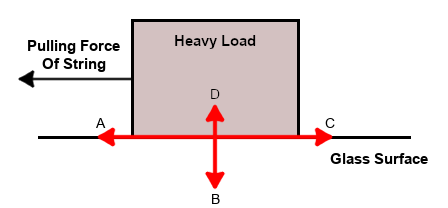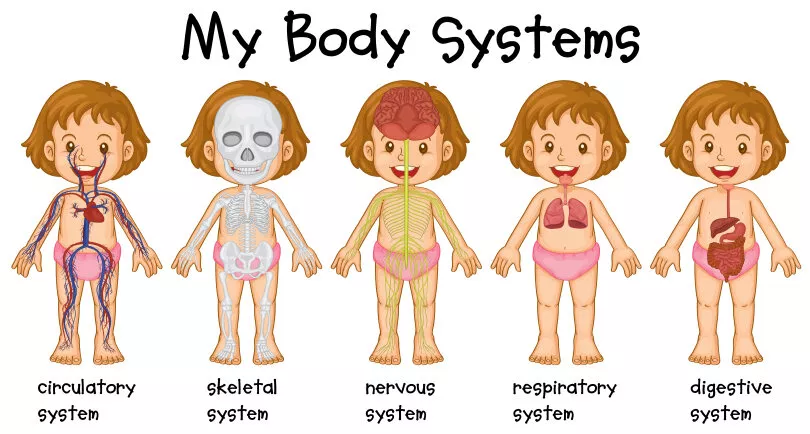Interaction Of Forces: Friction
In this article, you will be introduced to the concept of frictional force and its effects on moving objects according to the Singapore Primary 6 Science Syllabus.
What is a force?
A force can be defined as a push or a pull. When an object pushes or pulls on another object, the first object exerts a force on the second object. A force cannot be seen but the effects of a force can be seen or felt when it is applied on other objects.
The effects of forces are:
- stop a moving object
- change the direction of a moving object
- make a stationary object to start moving
- change the shape and/or size of an object
- increase or decrease the speed of a moving object
There are four types of forces that you will learn in Singapore Primary 6 Science: frictional force, elastic spring force, magnetic force, and gravitational force.
However, we will be focusing on frictional force in this article.
What is friction force?
Frictional force (or friction) is a force that opposes or resists movement (motion) of one surface past another.
For example:

When you push a wooden box from the left to right as shown in the diagram above, the direction of motion of the wooden box will be in the direction of the force which is from left to right. As frictional force opposes motion, the direction of frictional force between the box and the ground will be in the opposite direction of motion which is from right to left as illustrated in the diagram above.
The amount of friction force depends on:
-
The type of surfaces rubbing against each other

There is more friction between an object and a rough surface as compared to a smooth surface. Thus, an object will move a shorter distance when it is being pushed over a rough surface as compared to being pushed over a smooth surface.
This is the reason why we have a higher tendency to slip and fall while walking on a smooth surface as compared to a rough surface.
-
Mass of the object
More force is needed to move an object of a larger mass compared to an object of a smaller mass.
Effects of friction force
Let us look at the various effects of frictional forces.
-
Frictional force opposes motion.
| Effect (s) | |
|---|---|
| Advantage (s) |
|
| Disadvantages (s) |
|
-
Frictional force slows down and stops moving objects.
| Effect (s) | |
|---|---|
|
Advantage (s) |
|
|
Disadvantages (s) |
|
-
Frictional force produces heat.
| Effect (s) | |
|---|---|
| Advantage(s) |
|
| Disadvantages (s) |
|
How to reduce frictional force?
Frictional force can be reduced with the following:
| Examples | |
|---|---|
| Applying lubricants between moving objects | Apply oil on the hinges of the door to reduce the friction at the hinges to allow the door to be opened smoothly. |
| Place ball bearings between moving parts | Place ball bearings between moving parts of machinery to reduce friction between the moving parts. This reduces the amount of heat that is being produced in the machine. |
| Use rollers and wheels to move objects from one place to another | Rollers are used in conveyor belts to help move the objects on the belts from one end of the room to the other end. The wheels of the trolleys help to reduce the friction between the trolley (and its items on it) and the ground so that the items can be transported or moved easily. |
Conclusion
In this article, we learned that frictional force is a force that opposes motion when two surfaces are in contact. We also looked at the effects of the frictional force on the movement of objects. We also learnt about what we can do to reduce frictional force between objects.
| Continue Learning | |
|---|---|
| Interaction: Introduction to Force | Living Together |
| The Environment And Relationships | Food Chains: Roles And Relationships |
| Interaction Of Forces: Friction | Food Webs: Roles And Relationships |
| Energy In Food | |
Test Yourself
Which option is correct?
A force can __________ a moving object.
1: can stop
2: change the mass of
3: change the shape of
4: increase the speed of
A force can cause a moving object to stop moving and also can cause the moving object to change its speed.
A heavy load moved along the glass, aligning with the applied force as per the diagram.

Identify the arrow indicating friction's direction.
The direction of motion of the load is in the direction of the pulling force. Since the frictional force opposes the motion when two surfaces are in contact, the frictional force will act in the direction of C.
Four different forces are listed below. Which force is always opposite to the motion of an object?
Frictional force opposes motion.
Which of the following surfaces will provide you with the most friction as you walk on it?
A carpeted floor would provide the most frictional force as it requires the most amount of force to push an object (e.g the soles of your shoes) against the carpeted floor, compared to other surfaces mentioned in the question.


 SG
SG  VN
VN 














